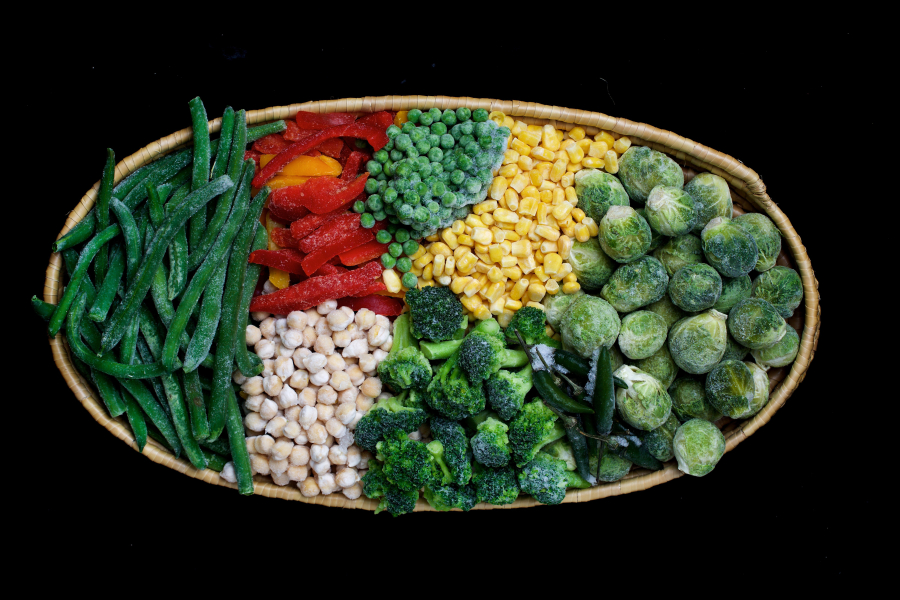Cutting waste is one of the food world’s top priorities. Up to 40 percent of all the food we produce ends up in the trash, and there are programs up and down the supply chain to try to pare that down.
But there’s a simple step consumers can take to cut waste: Rethink “fresh.”
It’s a word we associate with food that’s wholesome and good-tasting. And there’s no argument about a just-picked tomato or a just-caught striped bass; those are the tastes that drive me to grow tomatoes and catch fish. But most tomatoes and fish don’t come to us just-picked or just-caught. They come to us after having been picked or caught, packed and shipped, warehoused and displayed.
Because “fresh” signifies “perishable,” especially when it comes to produce and seafood, there’s a lot of waste in that system.
According to JoAnne Berkenkamp, senior advocate for the food and agriculture program of the Natural Resources Defense Council, freezing and canning can cut back significantly on produce waste — a huge problem, since slightly more than half of our fruits and vegetables go uneaten. The savings start within hours of picking. “The vegetables are typically shipped straight from the farm to processing facilities and frozen or canned within hours, and then stabilized for months or years,” she says.
The logistics are closely managed. Farmers contract to grow the produce, and planting dates are coordinated with processing plant availability, so when the peas are ready to harvest, the plant is ready to receive. With fresh, Berkenkamp says, “you could be moving from farm to packing shed to warehouse to truck to distribution facility to supermarket.” Each of those steps has the potential for loss.
But the biggest loss is our own fault. “About 43 percent of all food waste occurs in consumers’ homes,” says Berkenkamp. “It’s the largest single contributor to food waste, and much of that will be fresh product.” When was the last time you threw out fresh produce that moldered in your crisper? If you’re like most people, it was recently. I am shamed every time the greens get slimy or the broccoli goes limp.
And when was the last time you threw out frozen produce? You probably have — I know there’s been some freezer-burned sweet corn in my compost — but probably not nearly as often as fresh.
Freezing and canning cut down on waste in another way, too. Because the processing generally involves chopping and blanching, it doesn’t matter if some of the produce isn’t picture-perfect. The imperfect specimens go right in with the perfect ones, without the need to establish a separate chain for selling the rejects. Eat frozen, eat ugly.
Seafood big problem
Produce isn’t the only food we waste, of course, and there’s an argument that the problem of throwaway seafood is even more acute, given that seafood is a more limited resource. Among all the food categories, seafood comes in second only to produce in the amount we waste — about half of it, according to Berkenkamp, with much of waste coming at the retail level.
Some retail waste comes from a downright ridiculous practice that exists solely because of our prejudice against frozen food: thawing it at the fish counter.
You’ve undoubtedly seen it. You go to the fish market, or the fish department at the supermarket, and the fish are spread out on ice in the case. Some of the fish are labeled “fresh.” Others are marked “previously frozen.”
Now why on earth would the fish market take a frozen product that is only moderately perishable and turn it into one that is extremely perishable, thereby dramatically raising the probability that it will go to waste, either at the market or once you take it home? Because, and only because, we consumers don’t like the idea of frozen fish. Even if our rational brain knows it used to be frozen, our reptile brain still thinks it’s more appealing in its thawed state.
Nobody seems to track how much fish goes into the garbage because we are ruled by our reptile brain. But of all our food waste problems, this seems to me to be some of the lowest-hanging fruit. Can we just stop?
The preference for the thawed fish arises from a perfectly rational objection, of course: Frozen fish can be downright disgusting. I remember buying scallops that were the size of marshmallows when I took them out of the bag and the size of pencil erasers after I sauteed them. And mealy, nasty-tasting pencil erasers they were.
But here’s the thing. Fresh fish, too, can be downright disgusting, as anyone who has ever left one in the fridge a couple days too long can attest. The quality of any particular piece of fish isn’t as much in the “frozen” or “fresh” as in the devilish details. Fish that’s frozen on the boat in low-temperature flash-freezers, then packaged to reduce moisture loss, can reach our table all but indistinguishable from the fresh version. When we at The Post did a salmon tasting a couple years back, a frozen sample won top honors.
So what do we do about all this waste?
I’m a big fan of frozen vegetables and fruit, and not just because they reduce food waste. Some vegetables, such as peas and corn, are often better than what you find fresh.



